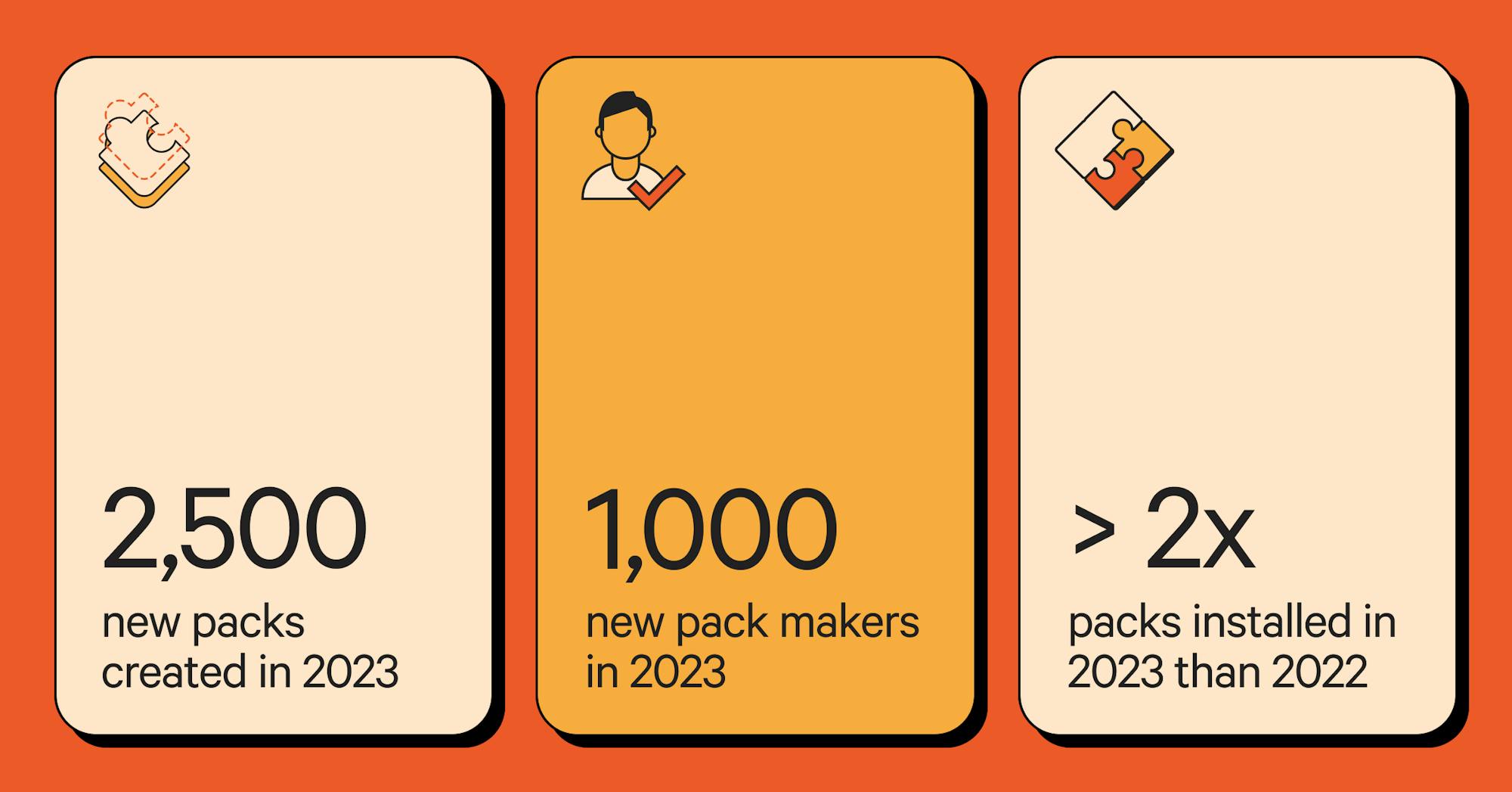2023 Year in Review: Documenting the delightful
Three makers, making.

From Coda AI to Coda 4.0, 2023 had its moments, big and small. Before we dive into what’s next year, we’re sharing three of our favorite stories from this year. The kind we can’t stop talking about—the kind that remind us that everyone is a maker. Enjoy!
1. Making the
impossible, possible.
Michael found himself faced with a last-minute request—a big one. Part of the research team at our favorite design company, he needed to find evidence that supported or refuted a particular point of view. Which meant digging through a staggering 10,000 pieces of feedback. Before Michael’s team started using Coda, they were tired of chasing data across an ever-growing suite of tools. But the introduction of Coda’s AI features changed everything—all of their workflows became thoughtful and adaptable. So, with time very much not on his side, Michael imported user feedback data into Coda. Using Coda AI, he efficiently labeled the feedback and parsed it down to the relevant segments. He then generated a prompt that specifically asked for evidence that either supported or refuted the point of view in question.“Coda AI made it easy to pull my data in and get insights from it, so I was able to quickly deliver something of value.”

Michael Nguyen
Researcher


2. Shifting focus.
A few years ago, Andrey met his future girlfriend; she was a nurse, and he was a product manager. Out of all the things they had in common, one shaped their relationship more than anything else: an irregular work schedule. As she rotated between day and night shifts, Andrey (based in Europe) stretched his working hours between San Francisco and New Zealand time zones. They felt like zombies: sleep-deprived, depressed, no energy. And their story isn’t unique: 1 in 5 employed people work nights! So, Andrey created inShift, an app that tracks work schedules and sleep to provide optimized routines that help the body naturally adjust between shifts. The app relies on hundreds of formulas to process inputs to predict the user’s Circadian Rhythm and deliver personalized recommendations in six areas: sleep, light exposure, caffeine, food, exercise, and body temperature control. And he built the whole MVP in Coda, without a line of code. inShift analyzes user inputs, like logged work schedule, sleep data with the Oura Ring Pack, and personal chores with the Google Calendar Pack. With the help of Philips Hue Pack, it automagically adjusts indoor light scenes to align with users’ biological needs and wake-up times.“With the help of Packs, inShift improved test user recovery metrics, like HRV and Resting Heart Rate, and added 3.5 hours of sleep for a set of 4 night shifts.”

Andrey Pyotukh
Founder, inShift


3. Giving a reason to
the season.
About a month ago, we stumbled upon an interesting doc: Children’s Dreams Database by Saint Nicholas’ Helpers. With the help of Google Translate, we realized it’s a heartwarming initiative dedicated to making the dreams of children come true. Like a virtual Angel Tree, the doc collects holiday-themed drawings and wishes from children in Ukraine—and gives any generous donor the opportunity to make a positive impact. The project also welcomes companies to participate, allowing them to choose specific locations or multiple locations to support a group of children. This way, gifts could be delivered and celebrations organized collectively, creating a joyous experience for all the children in a particular village or area.“For seven years, the St. Nicholas' Deer project has traveled to children living in Ukraine’s front-line cities during the winter holidays, bringing them gifts.”

Activists
from the St. Nicholas’ Deer project















